A teacher I know personally works with profoundly autistic, nonspeaking students. She revealed to me that one of her students, who can only communicate through typing, told her that her deceased father was with her and included personal, intimate details he couldn’t possibly have known. She also said that the students could communicate telepathically with one another. This led me to see if there was any research or evidence about this already.
What are “The Telepathy Tapes”?
“The Telepathy Tapes” is a podcast and documentary project by Ky Dickens that explores claims of telepathic communication between nonspeaking autistic children and their parents, educators, and each other. The project presents these claims as a “hidden form of communication” and features interviews with families, experts, and educators and footage of telepathy tests.
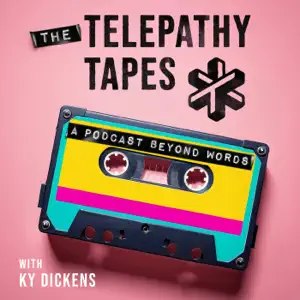
How is the story told?
According to Spotify, the podcast explores the phenomenon through emotional stories, expert interviews, and scientific exploration, aiming to challenge conventional views on communication and consciousness. The podcast starts every episode with the words, “For decades, a very specific group of people have been claiming telepathy is happening in their homes and in their classrooms. And nobody has believed them. Nobody has listened to them. But on this podcast, we do.”
What are the teachers saying?
On the fifth episode of the Telepathy Tapes, educators discuss the phenomenon of telepathy they have witnessed in their classrooms. Many have not publicly talked about this before, and that’s because they can lose their license, their job, or their reputation by doing so. One educator said, “I’ve never talked about it before. I’ve never talked about this. It’s like, don’t you dare say that out loud. You’ll lose your job. Other teachers don’t want to talk about it. They don’t want to sound crazy.”
Researcher Dr. Diane Hennessey Powell first revealed that teachers have long observed telepathy among non-speaking individuals. The first teacher Diane mentioned was Mary Ann Harrington. She was one of the early teachers who witnessed telepathy over 30 years ago. She has gone to great lengths to document it, validate it, and try to push this knowledge out there. She’s now retired and works on a volunteer basis with some of her former students.
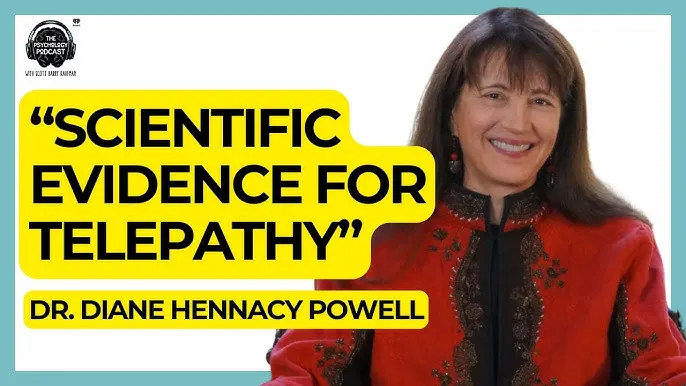
Mary Anne Harrington
“My name is Mary Ann Harrington, and I was first brought into this world as a classroom teacher for children with autism.” Mary Ann witnessed extraordinary abilities and talents over her time as a teacher and discovered the non-speakers’ spiritual gifts, as she calls them. It unfolded with many kids, with many different lessons. She said that her first concrete knowledge of telepathy was when she visited her former student, Anthony.
“I was visiting his classroom. He was no longer my student. The night before in the grocery store, I thought, well, I’m going to see Anthony tomorrow, and maybe I’ll bring him some of his favorite things. He liked the butter cookies with the hole in the middle, so I got some of those. I saw these little chocolate donuts, just those tiny packages, and I thought, oh, yeah, Anthony likes those, and then a little chocolate chip cookie thing. And I had gotten these fish candies earlier in the day.” When she visited him in the classroom, she forgot all the treats in the car. “At the end of the visit, I said, ‘I forgot I left your treats in the car,’ and I drew a picture of the butter cookie. I thought, well, that’s probably all I’ll bring in now, so I can share it with the class. He grabbed a piece of paper and drew a circle with some dots in it to show the chocolate chip cookies. He drew a donut and a triangle with a spine through it, which I assumed meant the fish candies. It really shocked me at the time for two reasons. I was impressed that he actually drew the pictures, and I was impressed by how the heck he got that information.”
In her retirement, Harrington spends time with Anthony and works with him often. “I never really asked him until many, many years later. It was because I was thinking about him in the grocery store the night before. And basically, I sent out a signal when I was thinking about him in the grocery store, about what he might like. It’s not like he just jumps into my mind. He gave me the impression that he doesn’t go anywhere uninvited. That was just the beginning.”
With permission from parents, she started to conduct her own telepathy tests with students. “I started making some videos to send out to people. I sent it to quantum physicists. I sent it to universities that I thought might be interested. I just want them to know that they’re overlooking some huge phenomena. And these kids are really quite spectacular. They can teach us a lot about consciousness in general.”
Marianne’s efforts to get someone, anyone, to recognize the gifts in her students are remarkable. She did a variety of tests using Legos and Scrabble letters. “I was either censored, ridiculed, or just plain ignored. It just never really got investigated by the medical or scientific community.” She said she didn’t have enough letters after her name to be taken seriously. “These kids are miraculous beyond belief. We have to protect them at all costs.”
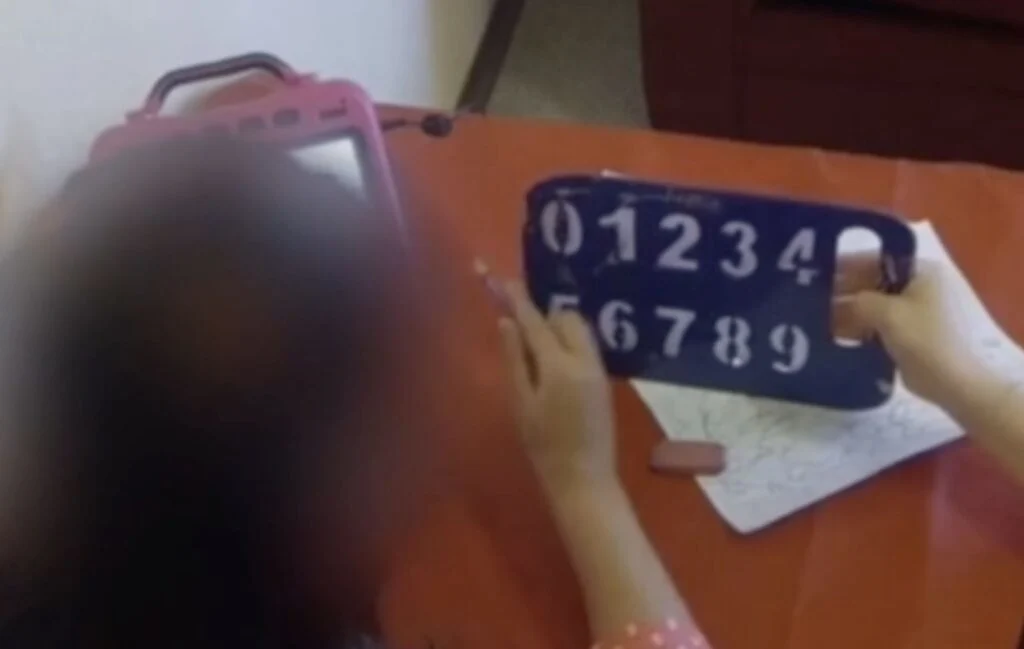
Carrie Houston
Carrie Houston is a pseudonym for a speech and language pathologist. She has primarily worked in the school setting for the last 30 years, and what she talks about could possibly affect her professional license and certification, and she’s not ready for that to happen yet.
She has been working with the autistic population for at least 27 years, and most of them have been nonverbal. “They can read thoughts. Yes, absolutely. There’s no argument there. They’re not even listening to our words.” She points to a real, tangible moment when other people were in the room and they witnessed something remarkable with one student. “He typed that he can read my thoughts. He’s typed that he can read others’ thoughts. And the teacher started to understand this because of the things that he was typing with them as well. But the most blatant experience of it was when there were three of us standing together. It was myself, his para, and the child. And maybe the teacher was behind.
This student immediately started acting out and was getting a little bit upset. And I said, ‘What is going on? Will you please type for me?’ He said, ‘The name of his para is going to the beach.’ And I said, ‘What are you talking about?’ And then the para got a text message from her husband saying he was in Atlantic City, locked his keys in his car, and may need her to get him. And I had no idea what was in the text. And his para just looked at me and said, ‘Are you kidding me?’ She showed me the text. I mean, Atlantic City is the beach. And so he was reading what was going on in her mind, and the possibility that she might have to go to Atlantic City. So even though I knew about his abilities, that solidified it more with the paraprofessional and the teacher.”
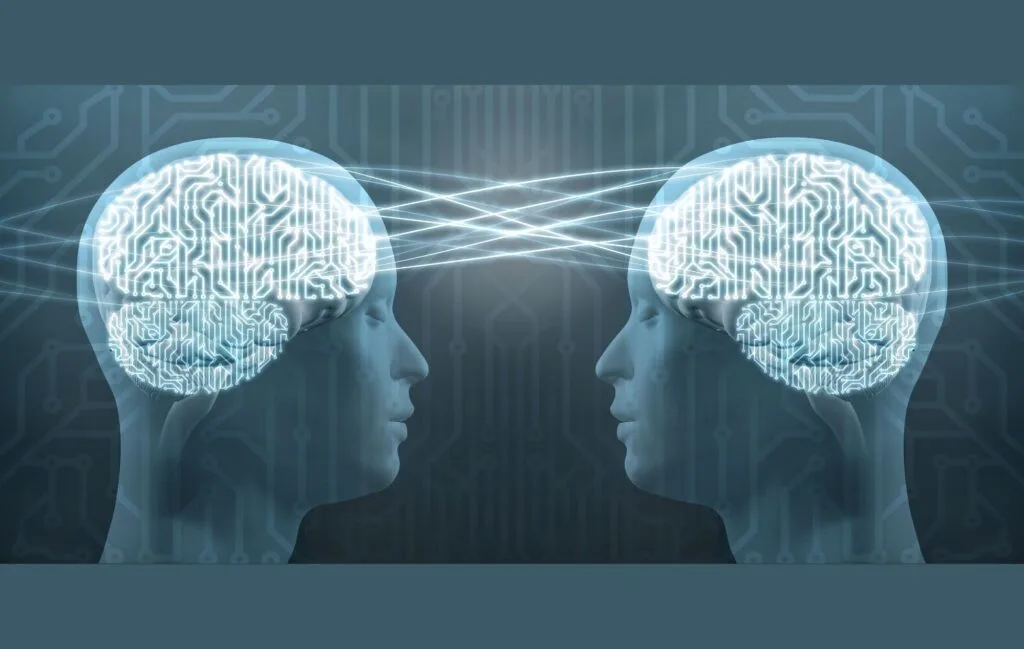
“Ms. Casey”
“Ms. Casey” is a teacher in the South. “I was a teacher at a school for children with developmental issues. When I started working with this one kid in particular, I’ll call him Jay, a series of events happened where he knew information that nobody had told him. Small things over time just added up.
For instance, Jay one day would just start crying and acting out. We were trying to figure out what it was, and he typed, ‘I’m sad because he’s leaving me.’ He knew that one of his favorite teachers was changing schedules and buildings. We never told them when schedule changes happened, but he knew that one of his favorite teachers was changing schedules and buildings.”
At a certain point, Ms. Casey decided these things couldn’t be coincidences. So she decided to flat-out ask Jay about it. She said, “Jay, this is going to be kind of a weird question, but can you type what I’m thinking? I was thinking of one word, and it was the word space. And he just typed that. I was in shock. And then I was thinking, okay, it could be a fluke. He did that over and over. Being a mother myself, I knew that if I was going to tell anyone, it would be his mom. And I asked him first, of course, and he said yes.”
They set a meeting with his mother, and Jay was very excited and nervous. “He was bouncing off the walls and couldn’t regulate his body enough to sit there and spell what was happening. So I finally just blurted it out. ‘You’re going to think I’m crazy, but your kid can read my mind.’ I was so afraid. But immediately she started crying, and she said, ‘I knew he was special.’” And then they collectively agreed that they should tell the principal.
Ms. Casey, just like so many teachers, didn’t know this was happening elsewhere. So she thought they were witnessing a singular independent miracle of sorts. Of course, she wanted to tell the principal as if a teacher had discovered a prodigy in her classroom. “I told her what I found out about Jay. I said I found out he could read minds. There was a little smirk, and she said, ‘I thought this might be why you’re here.’ She was not surprised by it. She then said that they are aware of this and have a list of students they know are like him. She had been told that non-speakers were telepathic before.
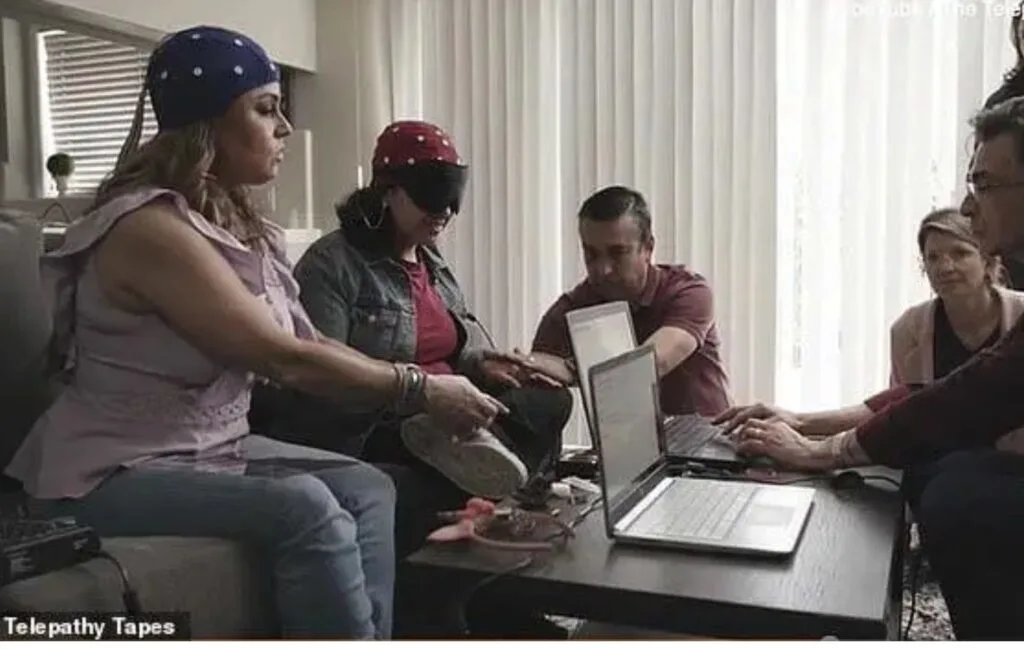
Jess
On the other side of the Atlantic, a teacher named Jess discovered this in a similar type of school. “I started off as a teacher. That was my first and only job, really.” She’s now a retired teacher in Somerset, England. In the late 1980s, she was asked to do a temporary contract in a school for children with speech and/or language difficulties. It was an intimidating new environment for her, but she loved it, and it turned into a permanent post.
A new six-year-old student named Asher joined the class, and immediately Jess noticed that he was immensely influencing the behavior of the rest of the class, although no words were being spoken. “I’d be reading a story to the class, and they’d all be sort of giggling to themselves, and they’d never done that before. They were really good little children. The entire class started acting differently. This was the first time I’d ever noticed that they were communicating with each other in a nonverbal way. One day, I remember seeing them out in the playground, playing a game together. Everybody knew where everybody else was going to be and what was happening next. There was a real storyline to it. And yet none of them were speaking. It suddenly dawned on me that these little kids are communicating with each other through telepathy. And I kept it to myself, but I must have put out mentally to the children that I wanted in on this. I wanted to understand what was going on. I wanted to be part of it. And quite a few of them started to include me and to kind of teach me and train me in telepathy, for want of a better word.
I was working with this girl. I suddenly got this sort of prickling you get on the back of your neck when you know someone’s staring at you. And it was like an enhanced version of that. I was really feeling uncomfortable. I could feel that one little boy was behind me, and he was beaming at me really strongly that he wanted my attention right then and there. And it wasn’t a conscious thing. I was working with this little girl. She was really working hard. And I just said, without even turning around, ‘Jimmy, just wait a minute, please. I’ll come and help you in a sec. I’ll get to you, but just be patient.’ Asher, who was a bit verbal, was sitting across the room, watching the whole thing. And he said, ‘Well done, Jimmy. She got it. She got it.’ And then the whole class started clapping. With Asher saying she got it, and the whole class clapping, I thought, ‘They want me in on this, which is wonderful.’
The next step was a little boy called Max, who took on the role of talking into my head. I could actually hear his little voice in my head when he wanted my attention. I could be off in the staff room or the school hall or something, and then I’d get this little voice in my head that was audible. And I’d have to then go searching around the school to find Max. And there was always some problem, you know, somebody falling over or something had gone wrong, or somebody wasn’t feeling very well, and he wanted me to come and sort it out.”

Dr. Sheldrake
Ky Dickens, the documentary filmmaker, asked Dr. Rupert Sheldrake, an esteemed biology professor and researcher from Cambridge, how something like this could be possible. He has studied telepathic communication in animals and validated the sense of being stared at in various peer-reviewed studies.

“I think that our minds are field-like. They’re extended in space. They’re not just things confined to the insides of our brains. And the idea of fields that are extended beyond material objects is actually totally standard within science. The gravitational field of the Earth stretches out through space invisibly. No one has any problem with gravitation, nor does anyone have any problem with magnetic fields stretching out beyond magnets. And then your cell phone has an electromagnetic field.
Dr. Sheldrake has written over 100 articles in peer-reviewed journals and nine books. Gravity, magnets, and cell phones all have these powerful fields that impact the physical world around them. And we can’t see the fields, but we know they’re there. So it doesn’t feel like a leap to think of our brains as having a mental field that extends beyond our body and can possibly impact, overlap, or even merge with other mental fields. It’s like when you think of somebody and want to call them up; that person may be 100 miles away or more, but they can feel the intention if they know you well, and they start thinking about you. So then, when you call them, they say, that’s funny, I was just thinking about you. Most of us have had this happen when we receive a text or call right when thinking about someone.
“I absolutely have heard my students’ thoughts,” Carrie Houston says. “I absolutely have answered them verbally. I don’t know that I’ve ever shared it with anyone that I can hear their thoughts. So it’s tricky for me because I think I’ve turned it off because of my situation. If I really sit and really work at it, I can definitely hear it. But on a day-to-day basis, especially if I’m typing with a child, I make them type their thoughts because I need it to come from them.
According to Ms. Casey, “I don’t know how this happened. I just know that we were at school. A student was typing, and I started hearing what he was typing before he typed it. I don’t remember exactly what the sentence was, but he was typing it and I was hearing it before I saw it on the screen. And it happened quickly because I thought, wait, I’m getting a thought. You’re typing the thought, but the thought’s not mine. So, how is this happening? I’m trying to process all of this within seconds. And I’m like, hold on. Are you reading me, or am I reading you? He said, ‘You’re reading me.’ And I was like, how? How did this happen? I still am not sure. But since that moment, I have had a telepathic connection with him where we can communicate mind to mind.
Marianne can go back and forth telepathically with multiple students. “For me, I just hear the words. It’s in my head, but it seems to be on the left side, you know, through my left ear. I don’t know why. I hear the words before they’re typed, and I can do it with more than one person. So once you have an awareness, I think it’s open to others. I don’t know how the other teachers with telepathy feel, but I am in contact with many. I just actually hear the words. We’re just like one person is what it feels like when we’re doing it.
“The Hill”
Now to another teacher who lives in Illinois. She doesn’t know anyone that we’ve introduced thus far. She said that her students talked about something called “the hill.” “My name’s Maria. I work in the northern suburbs of Chicago in a private practice, and I predominantly see non-speaking autistic students.” Maria has been working with non-speakers for over 20 years. “Over the past five years, I’ve learned that many of my students, all at this point, have telepathy and can read thoughts and see spirits, and in some cases, they have been able to predict events in the future.”
Maria discussed a concept called “the hill.” She said, “Two students explained a place where they gather, but it has no dimension. Because they gather together, they call it the hill because it kind of makes a hill of thoughts. They all go there in their thoughts. And that’s why they call it the hill. One of my students even shared that many people from here are there, but he doesn’t talk to them when he goes to the hill. He talks to this person from Denmark and one from Canada because one talks about time travel, and the other talks about bees and the environment. I was truly at a loss for words.”
According to Maria, a student shared that he would communicate with another student at his home during the school day. He goes to see him at his home in his mind every day at two o’clock, and they visit. They have a set time. We have a deep drive to connect and know each other. And for those who can’t, because they don’t have a voice, they have figured out a way.
Ploink
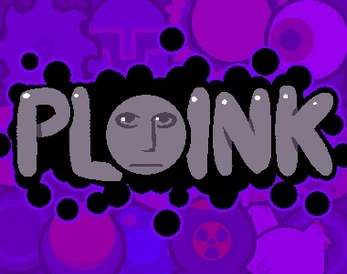
Carrie, who lives in Pennsylvania, also thinks her students telepathically hang out and communicate with each other. “It’s my understanding that they all communicate together. One student explained it as a grid. They’ve also started using similar words, which is interesting. The word ‘ploink’ has come up, P-L-O-I-N-K. And it means to play almost.
One student told me, and then another used it, an adult who was not even in the school. It keeps showing up, which is also fascinating to me. It also lets me know they really are on the grid together and communicating with each other. Because the times that ploink has come up, that word wasn’t even in my mind, my vocabulary.”
Body of Light

And that brings us to our next teacher, Suzy Miller, based in Arizona. “My name is Suzy Miller, and I’m the author of Awesomism, A New Way to Understand the Diagnosis of Autism. I was a pediatric speech-language pathologist for decades and am now working with families all over the world. My very first interaction was in 1999, and I was given a client who was diagnosed with autism. I went to this kid’s daycare center to see him. He walked around his daycare center saying, ‘It’s the millennium, it’s 1999.’ And through my speech pathology eyes, I think, okay, this is a strange little kid.
I didn’t know what to do with him because I had no training in autism at the time. I was giving him some space. I sat down against the door. I let him walk around the room and get used to me, and I got used to him. And as he was doing that, I saw this body of light floating above his physical body. I kept rubbing my eyes, wondering, ‘what the heck is going on? What am I seeing?’ And I couldn’t get that visual to go away. I saw it with my eyes open, saw it with my eyes closed. It didn’t matter. And then I heard this little boy’s voice say in my head, and he said, ‘That’s my light body. You’re here to put my light body back into my physical body.’
And I had no idea what he meant. I had no idea why he thought I had the ability to do that because I didn’t consciously know anything about that.” This had a profound impact on Susie, and it changed the rest of her life. The boy was 4 years old and speaking to her telepathically. “And, it was so clear. It wasn’t something where you’re kind of going, did I just make that up? It was so clear in my head. Anytime I tried to tell somebody who was in my profession, a speech language pathologist, they thought I had lost the plot, you know, and rightly so. The very first thing I asked the boy was, ‘Can I tell your mother?’
I’m a pediatric speech-language pathologist. I hold a license, I’m certified, and I have a certificate of clinical competence. I wanted to know if I could tell his mom what we were doing. And he said, ‘No, she won’t be ready yet, but she will be.’
“I still had a job to do. I was looking at his receptive language and expressive language, and trying to understand what he knew and could do. I remember one time he said, ‘Bring colors to me. I just need color.’ So I’d bring all these big, colored scarves. While doing the classwork, he wanted me to put the colored scarves over him because he could tell me the answers when the scarf was over him. And when the scarf wasn’t over him, he couldn’t. If the scarf wasn’t over him, nothing. He would look at me like he didn’t understand a word I was saying. I asked him what was going on, and he said he could take all that information, put it into a color, and absorb the color, but he couldn’t absorb the pictures and the words.”
This is fascinating because it reveals how some of her students process information. Most people process things through their five individual senses and the integration of sensory and motor skills. The non-speakers, however, without that connection to reliable motor skills, seem to process information through the transfer of energy instead, whether that energy be thought, emotion, light, or sound.
Eventually, she started to write down many of her findings, stories, and the reality about telepathy within this population. “So I wrote Awesomism, and I had so many people reaching out, including professionals, parents, psychiatrists, and educators, talking about kids who were telepathic with other unique skill sets. As part of my work, I help teachers or family members with the telepathic link. At one point, I ran a practitioner process. Its main focus was just helping people make that telepathic connection. It’s really important when people first have telepathic experiences with the kids that we keep going back to the source and verbally say to them, ‘Is this what you meant? This is what I heard.’ Every single one of the kids will give you a yes or no, one way or another.”
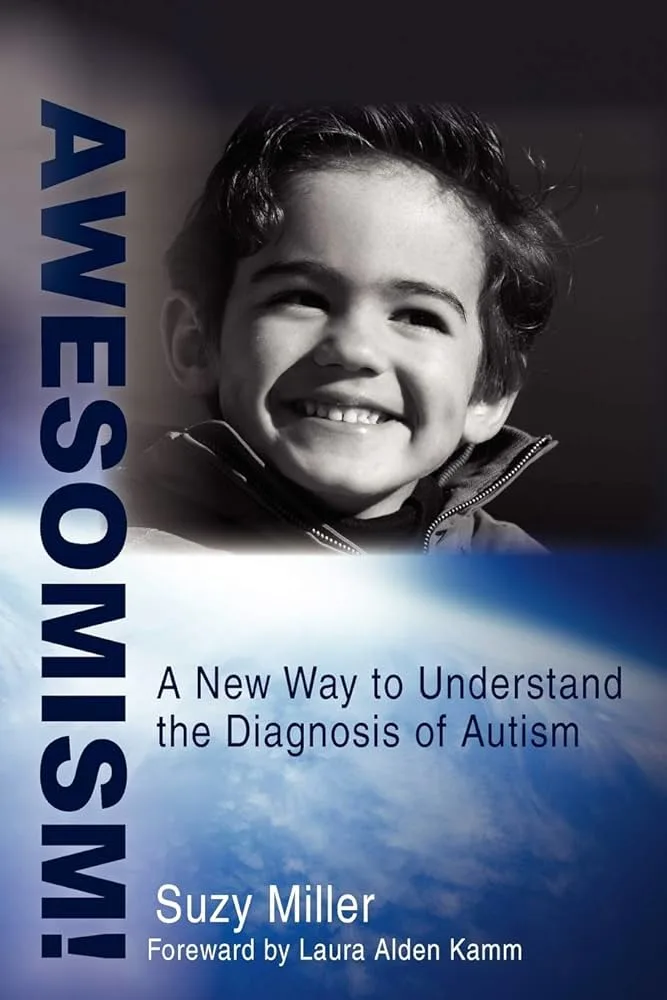
Marianne’s student Asher found telepathy a much more streamlined communication method. He said, “When some other neurodiverse people and I produce sound, it does not come easily. To others, it sounds discordant. Words are a kind of freezing of ideas and sounds into symbols. And for that reason, they can create a barrier or problem for some neurodiverse people. When we try to speak, we must consider volume, pitch, tone, expression, and intention in order to communicate verbally, as well as create the actual sounds with breath, mouth, and throat. Those things are exhausting and difficult. It’s such a crude method of communicating compared to telepathy. After all, we usually know what others are thinking. It would be so much easier if they could feel our thoughts.”
Skepticism
This might be really hard to accept. We need to approach this with open-minded skepticism. If you’re truly skeptical, you’re willing to ask uncomfortable questions and seek the answers, no matter how uncomfortable the questions make you feel. And there are dozens of teachers and therapists who have all mentioned engaging in this two-way telepathy.
According to Dr. Sheldrake, this is all biologically based. “We know that telepathy is a two-way process. I think there are actual resonant connections between members of social groups that remain linked even when they’re far apart. When they’re together, it’s clear that they’re part of a field that they all share. And you see this with flocks of birds like starlings, where you can have hundreds of thousands of starlings, and they change direction almost simultaneously without bumping into each other. They all know where their neighbors are and where they’re going to go. They’re responding to something bigger than themselves. So I think this is true of social animals throughout the animal
kingdom, including termites and ants. It’s true of flocks of birds, herds of bison, schools of fish, packs of wolves, and so on. And I think this bonding in social animals means they remain connected at a distance.”
Jess never told any other teachers or the headmistress at the school what she was experiencing. She thinks she’d have lost her job. “I think it’s as simple as that,” she said. “I met one lady who worked with nonverbal autistic preschoolers who was picking things up, and she started sending messages home to the parents that these children had telepathically dictated to her. And one of the parents took it up with the head teacher and said, ‘Look what this crazy woman is doing.’ She was sent off for psychiatric testing.”
In our society, Europe and North America, we’ve had more than 100 years of skeptical, materialistic, scientific education. For believers in that worldview, these things are simply impossible. There’s no way your thoughts or intentions could affect another person or an animal who are miles away.
Skeptics have had an undue influence throughout the universities and through the media. And their main influence is through trying to make people who disagree with them look stupid. They don’t look at the evidence; they just discredit it.
Final Thoughts
Telepathy can be scary. It’s something that we see in movies that superheroes do, but mere mortals cannot do it. And so it has become something to be feared or just not believed. The professionals who experience this with students are not uneducated, misguided, “woo-woo” people. It took most of them months, if not years, to reluctantly accept what was happening. What will it take for everyone else to believe?
If you liked this post, you might like America’s Most Haunted Schools.

